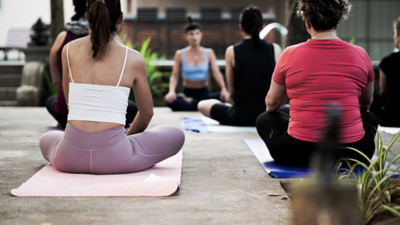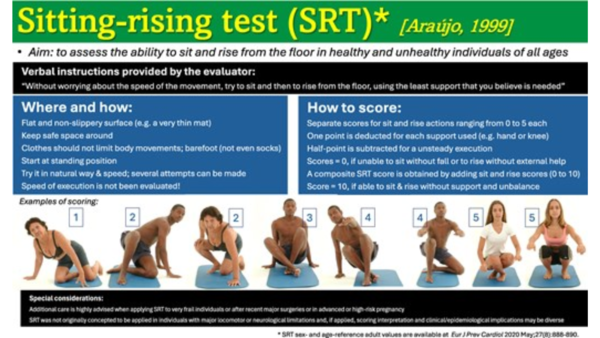Check Your Heart Health: The Simple Sitting-Rising Test

This might look like a simple trick. Sit down on the floor. Then stand up without using your hands or knees. But did you know this move could tell you something about your heart health? It’s called the Sitting-Rising Test (SRT). Scientists say it’s a simple way to check your heart health.
What is the Sitting-Rising Test?
The Sitting-Rising Test has been used by doctors for many years. New studies show it can tell us about our heart health. Here’s how it works:
- Start by standing straight.
- Sit down on the floor.
- Stand back up.
You start with 10 points. You lose points if you use your hands, knees, or lose balance.
What the Research Shows
A study in the European Journal of Preventive Cardiology followed over 4,200 adults for 12 years. The results were clear. People who scored low on the test had a higher risk of heart problems. In some cases, the risk was up to six times higher.
Dr. Claudio Gil Araújo, who led the study, said the test checks more than just cardio fitness. It looks at muscle strength, balance, flexibility, and body control. These are all important for staying healthy as we age.
Why is This Test Important?
The test shows more than just muscle strength. It checks your flexibility, balance, and coordination. If you struggle with the test, it might mean you need to improve your health.
Doctors say a low score can predict falls in older adults. It could also mean you have health problems like clogged arteries or high blood pressure.
Sitting for long hours can be bad for your heart. Even if you exercise, sitting too much can still be harmful. The Sitting-Rising Test is a simple way to check your health.
How to Do the Test
Here’s how you can do the test at home:
- Find a flat, non-slippery surface.
- Stand barefoot and wear comfortable clothes.
- Slowly sit down and then stand up without using your hands or knees.
- You can cross your legs if it helps.
It’s best to do this with a partner who can watch and score you.

People who scored between 4.5 and 7.5 were about three times more likely to have heart problems than those who scored a perfect 10.
What to Do If You Struggle
If you struggle with the test, don’t worry. It’s a sign to start moving more. Here are some tips:
- Build strength in your legs, hips, and core.
- Practice exercises that improve your mobility.
- Get up from your desk every 30 minutes.
- Walk around when you’re on the phone.
- Dance while you do chores.
These small changes can make a big difference. People with low scores often have poor cholesterol and blood sugar levels, even if they don’t look overweight. This test is a simple and honest way to check your health.
Try the test at home. If you struggle, use it as a reason to start moving more. Not just for your muscles, but for your heart. Sometimes, the simplest tests can tell us the most important things.



